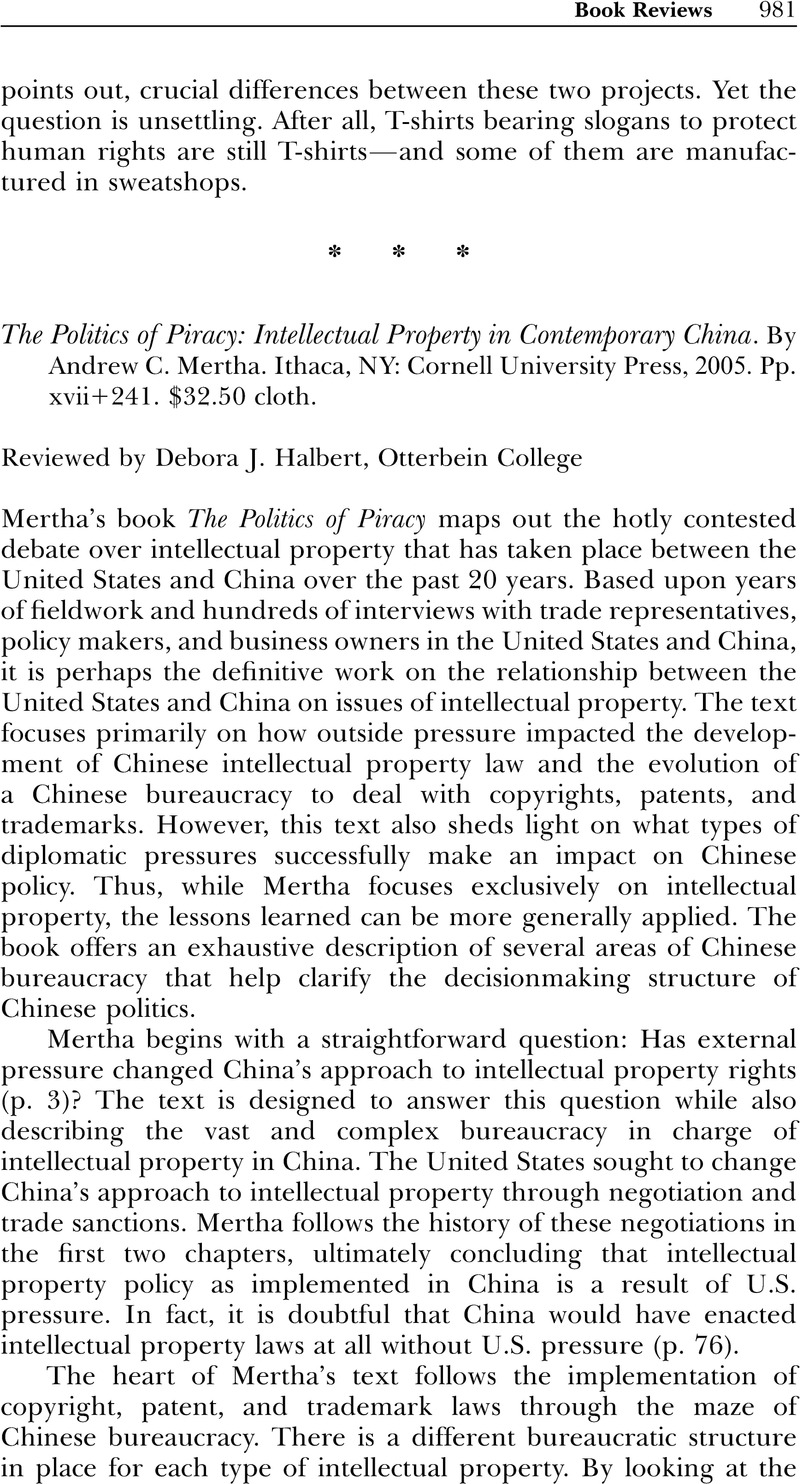No CrossRef data available.
Article contents
The Politics of Piracy: Intellectual Property in Contemporary China. By Andrew C. Mertha. Ithaca, NY: Cornell University Press, 2005. Pp. xvii+241. $32.50 cloth.
Review products
The Politics of Piracy: Intellectual Property in Contemporary China. By Andrew C. Mertha. Ithaca, NY: Cornell University Press, 2005. Pp. xvii+241. $32.50 cloth.
Published online by Cambridge University Press: 01 January 2024
Abstract
An abstract is not available for this content so a preview has been provided. Please use the Get access link above for information on how to access this content.

- Type
- Book Reviews
- Information
- Copyright
- © 2006 Law and Society Association.


